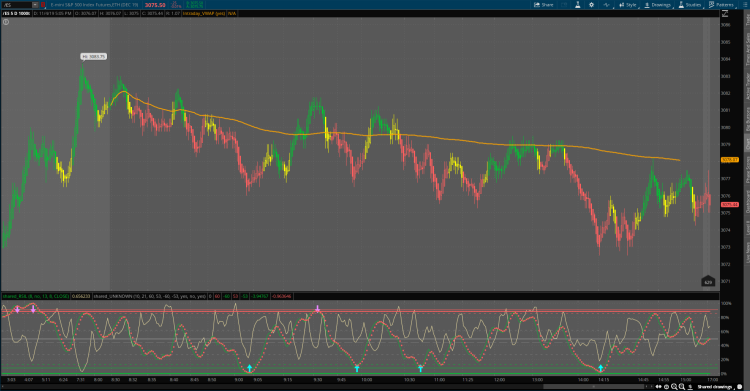In the world of investing, predicting future market trends is a vital aspect of creating successful investment strategies. Futures markets provide valuable insight into the expectations of investors regarding the prices of various assets in the future. These markets, often seen as barometers of future prices, offer a wealth of data that can help investors make more informed decisions. Understanding how to use futures market data to forecast future trends and build medium- and long-term investment strategies can significantly impact the success of an investor’s portfolio. This article will explore the key factors driving futures market fluctuations and offer an in-depth analysis of how investors can harness futures data to predict future market movements.
Understanding the Futures Market
The futures market is a marketplace where participants can buy and sell contracts that agree to buy or sell an asset at a predetermined price at a future date. These assets can include commodities like oil, gold, agricultural products, or financial instruments such as stock indices and currencies. Futures contracts are primarily used for two reasons: hedging and speculation. Hedgers use these contracts to protect themselves against price fluctuations in the underlying assets, while speculators attempt to profit from anticipated price changes.
The price of a futures contract reflects the market’s collective expectations about the future price of the underlying asset. As such, the futures market is often considered a forward-looking indicator, providing insights into how traders anticipate the supply and demand dynamics will unfold. By analyzing futures market data, investors can gain valuable clues about where the market might head in the near and long term.
How to Use Futures Market Data to Predict Future Market Trends
- Price Movements and Market Sentiment
The most straightforward way to use futures market data is by analyzing price movements. Price trends in futures contracts can reveal shifts in investor sentiment. If futures prices for an asset are rising, it may indicate that investors expect higher demand for that asset in the future. Conversely, if futures prices are falling, it might signal an anticipated decrease in demand or oversupply. These price trends often precede movements in the spot market, making them valuable indicators for predicting future market trends. - Open Interest and Volume Analysis
Open interest refers to the total number of outstanding contracts in the market, while volume indicates the number of contracts traded during a given period. Changes in these two metrics can provide insight into the strength or weakness of a price trend. For example, rising prices accompanied by increasing open interest and volume suggest that the trend is supported by a growing number of market participants, indicating a strong and sustainable trend. On the other hand, if prices are rising but open interest and volume are declining, it could signal that the trend is losing momentum and may reverse soon. - Futures Curve Analysis (Contango vs. Backwardation)
The futures curve refers to the graphical representation of futures prices for a given asset across different contract maturities. A normal futures curve, known as contango, occurs when futures prices for longer-dated contracts are higher than those for shorter-dated contracts. This can indicate that the market expects the price of the underlying asset to rise over time. Conversely, backwardation occurs when futures prices for shorter-dated contracts are higher than those for longer-dated contracts, which can indicate that the market expects short-term supply constraints or that investors are willing to pay a premium for immediate delivery. Analyzing the shape of the futures curve can help investors gauge whether a market is in an upward or downward trend and whether that trend is likely to continue or reverse. - Seasonal Trends in Futures Markets
Certain commodities, such as agricultural products, experience predictable seasonal price fluctuations due to factors like weather patterns and harvest cycles. By studying historical price trends and understanding the factors that influence these commodities, investors can anticipate seasonal price movements and plan their investments accordingly. Futures data can help identify these patterns and offer insights into when to enter or exit positions based on expected seasonal trends. - Market Correlations
Futures data can also be used to analyze correlations between different asset classes. For example, there may be a strong correlation between the price of oil and the stock market. By analyzing the futures market for oil and observing its impact on other markets, investors can make more informed decisions about their broader investment strategies. Additionally, understanding how different sectors or asset classes move in relation to each other can provide insight into potential opportunities or risks in the market.
How Investors Can Use Futures Information to Build Medium- and Long-Term Investment Strategies
- Developing Risk Management Strategies
Futures data can be particularly useful in developing risk management strategies. For investors with significant exposure to certain assets, using futures contracts to hedge against price movements can reduce the risk of large losses. For example, if an investor holds a large position in stocks but is concerned about a potential market downturn, they can take a short position in a stock index futures contract to offset potential losses in the equity market. Additionally, futures data can help investors manage risk in more complex portfolios by providing insight into broader market trends and potential shifts in the economic landscape. Investors can use futures to diversify their portfolios and reduce exposure to any one asset class or market risk. - Using Futures to Forecast Economic Indicators
Futures data can offer clues about future economic conditions, such as inflation, interest rates, and economic growth. For instance, bond futures can provide insights into expectations regarding interest rates, while commodity futures can reflect inflationary pressures. By monitoring these markets, investors can gain a better understanding of how future economic conditions might impact various asset classes and adjust their strategies accordingly. - Building a Diversified Portfolio
Futures data can also help investors build more diversified portfolios by identifying investment opportunities in different markets. For example, if the futures market for gold is indicating a potential price increase, an investor may consider allocating a portion of their portfolio to gold-related assets. Similarly, futures data for agricultural products, energy, or foreign exchange can help investors spot opportunities across a variety of sectors, reducing the risk of overexposure to any single market. - Timing the Market for Long-Term Trends
One of the most important aspects of using futures market data for medium- and long-term investment strategies is timing. Futures data allows investors to monitor shifts in market conditions and adjust their positions in anticipation of longer-term trends. By carefully observing price movements, open interest, volume, and other indicators, investors can determine when to enter or exit positions in anticipation of market changes. However, it’s important to remember that the futures market can be volatile and that not all market fluctuations are predictable. Investors should use futures data in conjunction with other forms of analysis, such as technical and fundamental analysis, to make more informed decisions.

In-Depth Analysis of the Key Factors Driving Futures Market Fluctuations
Several key factors drive fluctuations in futures markets. These factors can range from macroeconomic conditions to geopolitical events and market sentiment. Understanding these drivers is crucial for analyzing futures data and making informed investment decisions.
- Supply and Demand Dynamics
The fundamental forces of supply and demand are the primary drivers of price movements in the futures market. For commodities like oil, agricultural products, and metals, supply disruptions due to weather events, geopolitical instability, or changes in production levels can cause significant price fluctuations. Similarly, shifts in demand, such as increased industrial activity or changes in consumer preferences, can drive prices higher or lower. - Geopolitical Events and Natural Disasters
Geopolitical instability, such as conflicts in key oil-producing regions, can lead to supply disruptions and cause prices to spike. Similarly, natural disasters like hurricanes or floods can disrupt the production of certain commodities, causing sharp price fluctuations. Futures traders closely monitor geopolitical events and weather patterns to anticipate potential market movements. - Government Policies and Regulations
Government actions, such as changes in interest rates, fiscal policy, or trade regulations, can have a significant impact on futures markets. For example, central bank decisions regarding interest rates can influence the value of currencies, and trade policies can affect the prices of agricultural products or commodities. - Market Speculation
Speculators play a key role in futures markets, as they seek to profit from price fluctuations. Their buying and selling activities can drive prices higher or lower, often amplifying trends. Speculators base their decisions on various factors, including technical analysis, economic data, and market sentiment, and can create volatility in the market, especially in the short term. - Global Economic Indicators
Economic indicators, such as GDP growth, inflation rates, and employment data, provide valuable information about the health of an economy. Futures markets often react to these indicators, with traders adjusting their positions based on expectations of future economic conditions.
Conclusion
Futures market data offers a wealth of insights that can help investors predict future market trends and build medium- and long-term investment strategies. By understanding the key factors driving futures market fluctuations, investors can use futures data to forecast future price movements, manage risk, and diversify their portfolios. However, successful investing in the futures market requires careful analysis, a solid understanding of market dynamics, and the ability to adjust strategies as new information becomes available. By integrating futures data into their decision-making processes, investors can gain a competitive edge in the ever-changing world of finance.





























